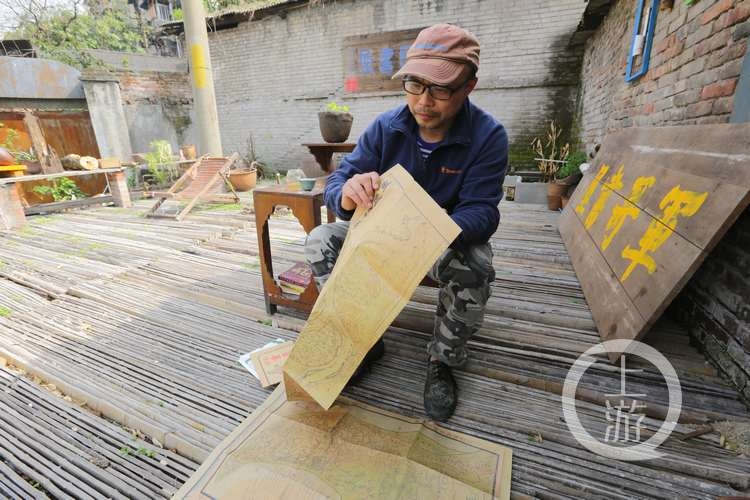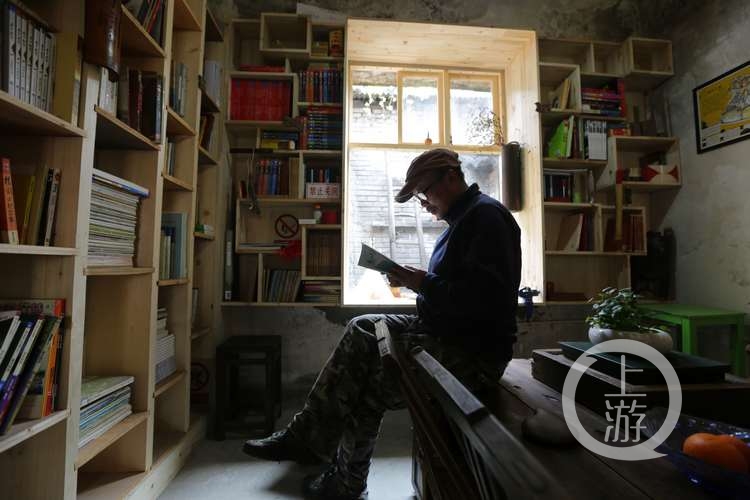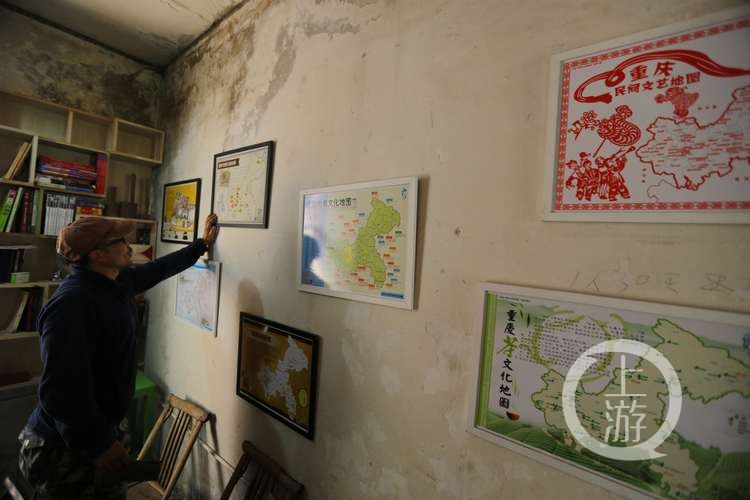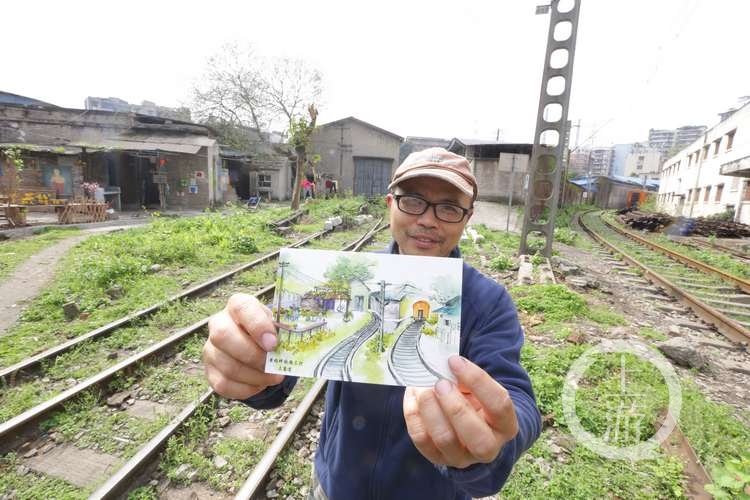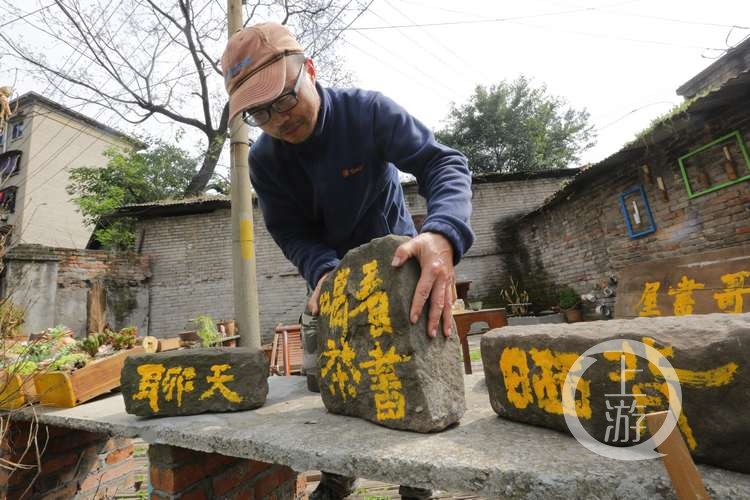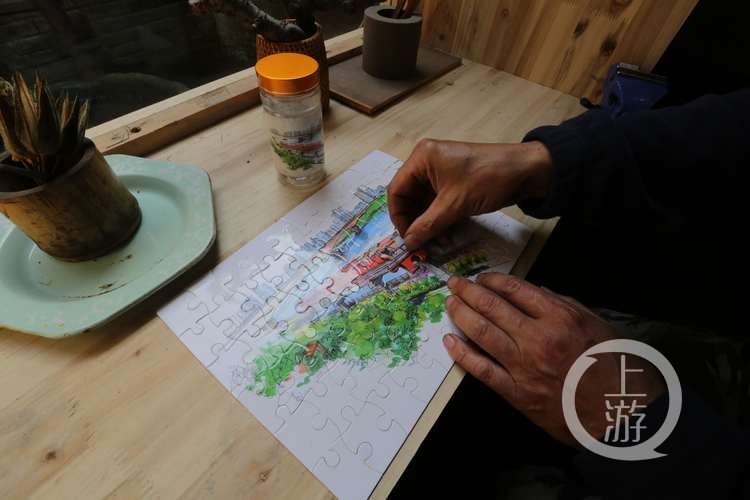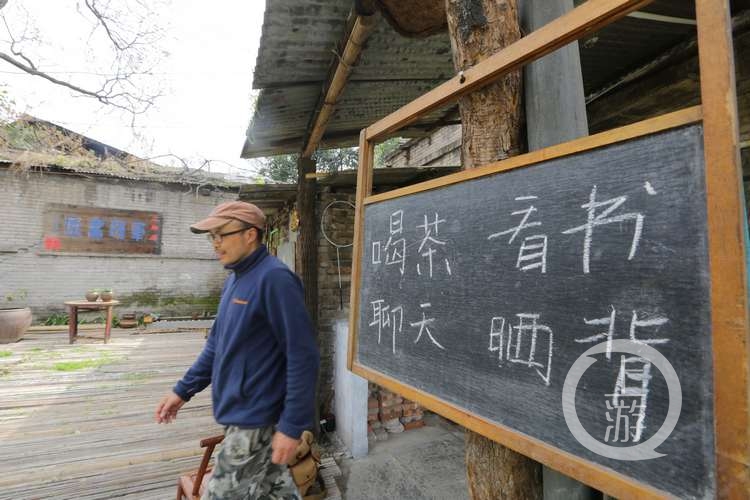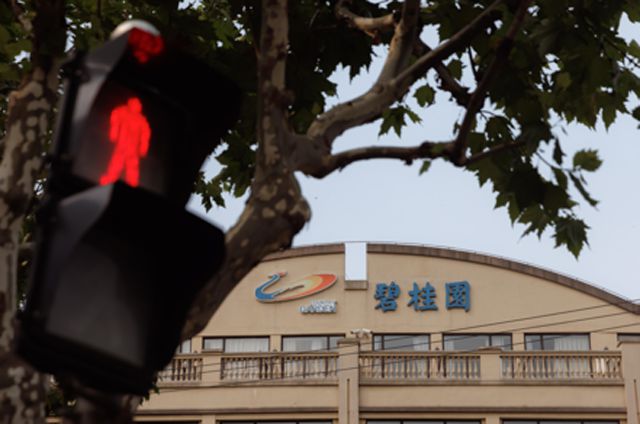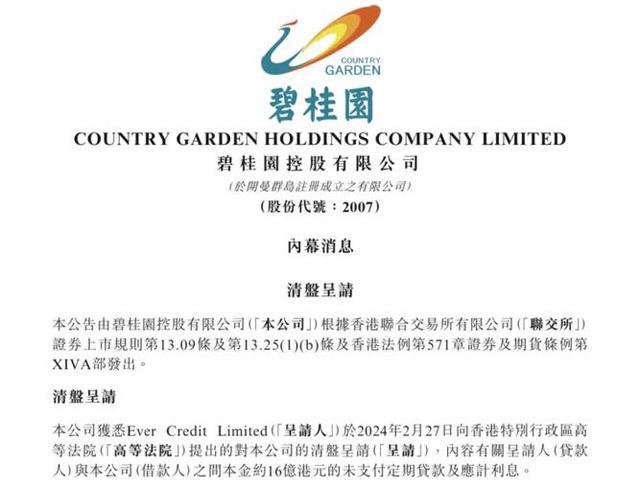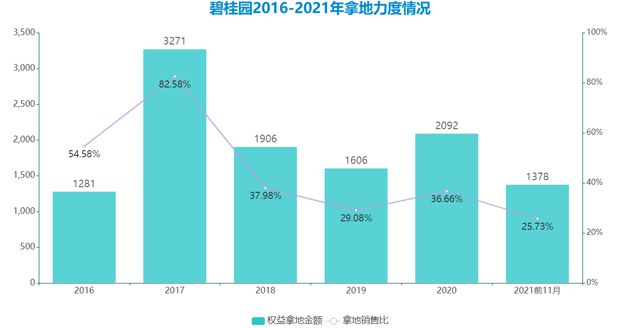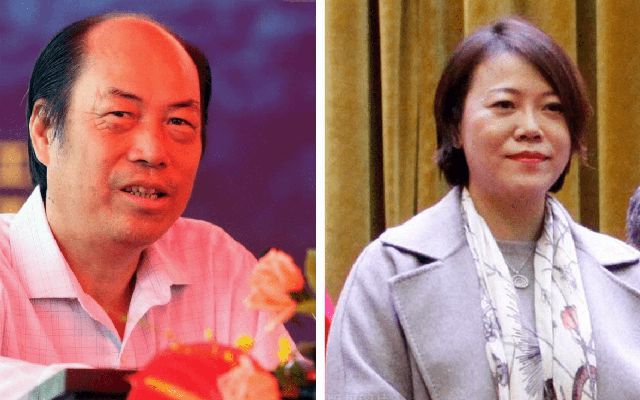Author | Jiang Haofeng
"Yellow croaker wants it?"
"What’s the price?"
"There are three big 120 yuan and one extra-large 80 yuan."
On the afternoon of May 6th, at the export commodities fair in the B2 central hall of the global port in Putuo District, Shanghai, an old couple who were just about to go to the "Pearl of the Sea" cinema upstairs passed by and didn’t miss it. They directly paid for three large yellow croakers, and told the boss that they hoped to keep them for them, and they would come back after watching the movie at six o’clock in the afternoon.
"No problem, we will give you a good ticket. I will pick it up by ticket later. " Yao Mei, general manager of Shanghai Guoxin Aquatic Products Sales Department, wrapped the three fish selected by the old couple in a thermal insulation bag and put them in the freezer. According to Yao Mei, this large yellow croaker was not for retail before, but only for hotels and exports. Because the United States wants to impose tariffs on global trading partners, the company simply moved the large yellow croaker to the exhibition. "It’s a work announcement, and I feel that consumers are willing to pay for these goods!" .
From the Ibera women’s shoes in Qingpu to the thermos cups of Shimizu Daily Products Co., Ltd., anyway, this fair has accelerated the work of the relevant staff-it originally ended in mid-May, but since May 13, it has been transferred from the B2 Central Hall to the South Square of the shopping mall. The reason is that the statistics of Global Harbor show that more than 100,000 orders were sold in the B2 floor trade fair area in 21 days, and the momentum of the transaction has not weakened, but there is still a tendency to enlarge.
From April 18th, the "Shanghai E-commerce Matchmaking Meeting to Help Foreign Trade Expand Domestic Sales" to April 28th, the "Shanghai Shopping Mall Excellent Foreign Trade Matchmaking Activity" was held, with one meeting and one activity, which promoted the "face-to-face" communication between key shopping malls and supermarkets in Shanghai and nearly 80 foreign trade enterprises, and connected many domestic demand channels. Looking around the big picture, the internal and external environment is still changing. On May 10th and 11th, local time, China and the United States held high-level economic and trade talks in Geneva, Switzerland, and reached a series of important consensuses. On May 12, China and the United States issued a joint statement on the Geneva economic and trade talks, jointly revised or cancelled relevant tariffs, and established a mechanism to continue consultations on economic and trade relations. How to adapt to the environment at the fastest speed? The reporter observed that some foreign trade enterprises, including Shanghai, seized the "window period" and entered the "catch-up mode", and simultaneously deepened the expansion of non-American markets and accelerated the global layout with the strategy of "multi-line advancement".
In an interview with Xinmin Weekly, Chen Zilei, a professor at the School of International Business and Economics of Shanghai University of International Business and Economics, analyzed: "In the face of changes in the external environment, China’s trade needs to pay attention to two points. First, it is necessary to "open up", for example, through the "Belt and Road Initiative" to realize the diversification of exports, open up markets around the world, including the global South, emerging economies, or developing countries, and increase the trade share in this area; Second, to integrate domestic and foreign trade, it is necessary to build a unified national market, improve the mobility of factors and break the domestic market barriers. That is to say, the policy of expanding domestic demand is well implemented. In this way, we can transform some high-quality products that were originally exported into our expansion of domestic demand. "

Commercial purchase and sale in Shencheng are booming. Photography/Yang Jianzheng
Which hot items to turn back to?
During the May Day holiday, there were more than 20 foreign trade enterprises participating in the exhibition in B2 Central Hall of Global Harbor, covering some shoes, hats, bags and aquatic products. By May 13th, when the Global Harbor Export Commodities Fair was moved to the south square of the shopping mall, not only the number of exhibitors increased to more than 50, but also products such as home appliances were added. As far as food is concerned, there are some that continue to sell well, and some that are newly added and sell well.
Pseudosciaena crocea is a "star" that continues to sell well. Yao Mei said that in the 21 days in B2 Central Hall, more than 5 tons of yellow croaker were sold, which was 20% higher than the company’s annual export in 2024! After the trade fair was moved to Global Gangnan Plaza, consumers still wanted to buy large yellow croaker. However, due to the hot weather, in the semi-open environment, how to supply consumers with well-preserved goods after freezing has slightly tested the docking ability between Guoxin Aquatic Products Sales Department and Global Port. Fortunately, the storage, pick-up and transfer of these goods are all minor problems. All parties can join hands to supplement the freezer, which can completely ensure the good quality when they reach the consumer terminal. Some citizens said: "I bought honey, yellow croaker, coffee beans and slippers, totaling more than 1,000 yuan to support domestic products." Some citizens also said: "The price is more affordable and the quality of foreign trade is more assured."

On May 10th, the "Global Port Export Commodities Fair" was held on the B2 floor of Global Port.
Business is really good. "On May 13th, the first day of the transfer to South Square, less than 10 o’clock in the morning, many citizens gathered at the entrance of the trade fair to wait for admission. At 11 o’clock in the morning, some foreign trade commodity counters in the venue have been sold out. " Maidan, assistant general manager of Shanghai Global Port, said. The reporter passed by the global port fair several times and found that the main consumers were middle-aged and elderly customers. According to these aunts and uncles, because people have retired, they have leisure to pick up goods during the day on the working day in the middle of the week, and in the impression, the quality of China’s export commodities is guaranteed anyway. "When Lao Diji heard that there was an export to domestic sales, he knew,’ Don’t be too embarrassed’, just buy it!" Some aunts said so.
In Yong ‘an Department Store on Nanjing East Road, there is a slightly different scene from the global port. On May 6, in the corner of the third floor of Yongan Department Store, a customer stopped in front of a jeans booth that had not appeared here before. A friend said that he "had never heard of this brand before". Another friend said that when he went to the United States a few years ago, he saw this brand in a large outlet store in New Jersey, and it sold well in the local market. The salesperson also confirmed: "This is a brand originally exported to the United States, and the quality is very good." The English logo of the American brand was made into a KT board, and it was also marked "Export to Domestic Sales". A Shanghai aunt stepped forward and pinched her jeans. "Well, it feels good!" She said to the man accompanying her, ready to try it on in the fitting room. From this aunt’s body, it is obvious that since she was young, she naturally has a sense of smell for fashion and trends, and quickly captures them. And this brand, which just came into the market in Yongan Company in the name of "export to domestic market", although it only sells women’s jeans for the time being, has withstood the eye test of some Shanghai women with rich life experience, and has a good sales volume-more than 20 pieces were sold in one morning, even if the absolute value is not high, but it has reached a brand-new "two-way trip". After all, a few years ago, if you wanted to buy this brand of jeans, you had to find someone to buy them in the United States-a pair of pants made in China but not sold in China. The buyer of this pair of trousers is in China.However, the trousers have to travel across the ocean to the United States-even to the outlets on the east coast of the United States, and then they are packed into bags and returned to China by plane with the purchasers. Even so, at that time, the price was cheaper than domestic similar goods, and the quality was better than domestic similar goods. Nowadays, from the factory to the fans in China, this pair of jeans no longer needs to fly back and forth in the Pacific Ocean, and the price also makes consumers feel comfortable.

On the first floor of the first food store on Nanjing Road Pedestrian Street, there are nearly 30 kinds of foreign trade goods exported to domestic market on the newly renovated "Silede" counter.
In such a situation of "export to domestic sales", merchants certainly actively cooperate. Chen Hui, manager of tenant management department of Yongan Department Store, said, "Under normal circumstances, it takes at least one month for a new brand to go online. If the brand is settled in according to our joint marketing model, it should be decorated by itself, and everything should be prepared by itself, but this time we will do it for you, the hangers are supported by various counters, and even the salespersons are rotated by employees in various positions in the mall. " According to the on-site salesperson, "extraordinary operation" and "green channel" make the newly imported goods transferred to Yong ‘an Department Store be sold on the counter at a faster speed.
As the reporter saw in the pedestrian street of Nanjing East Road, some export-oriented counters have to face the competition of online commodity sales. On May 6th, a coffee pot with a price of 288 yuan attracted the interest of an old man in front of the counter of the export brand "Silede" on the first floor of a food store. After playing with it for a while, he asked the selling price of this coffee pot in the American market. The shop assistant politely replied, "Uncle, I don’t know." A young man at the scene immediately compared the online selling price and told the old man that "during the May 5th Shopping Festival, he can get another discount from 200 yuan to 20 yuan", which seems quite cost-effective. The old man felt tempted.
In Chen Zilei’s view, the export of some consumer goods to domestic sales can bring certain benefits to the development of domestic economy and people’s livelihood. "Export to domestic sales can serve to expand domestic demand." Chen Zilei told reporters, "In the future, if there are more products that can improve consumers’ quality of life on the domestic market, this is not a bad thing. Can contribute to meeting the people’s growing needs for a better life. I think, at the same time, we have to increase imports to enhance the overall consumption vitality. "

2025 Shanghai International Auto Show. Photography/Chen Mengze
Build a complete domestic demand system
Some media observed: "The transformation of’ export to domestic sales’ jointly promoted by policies, enterprises and consumers is not only a self-help of foreign trade enterprises, but also an upgrading experiment related to the quality of life of every ordinary person. The shift of export products to domestic sales has brought new pressure. The original domestic products must compete with the low-cost export-grade inventory on the same shelf. " However, some people think that this kind of friction will definitely force the original domestic products: from "OEM" to "quality awakening", and stimulate the domestic retail industry to become more efficient, diversified and competitive. This is an opportunity to turn pressure into motivation, and it is a subversion.
Zhang Juan, deputy director and researcher of Shanghai Open Strategy Research Center (Shanghai WTO Affairs Consulting Center), said that there is a set of data that can’t be ignored: according to the export volume and domestic commodity sales of foreign-funded enterprises, the domestic sales scale of foreign-funded enterprises in China is about twice that of their exports in China. This data is even higher for foreign-funded enterprises in Shanghai. "Since China joined the World Trade Organization (WTO), foreign-funded enterprises have always been the mainstay of China’s foreign trade." Zhang Juan analyzed, "The proportion of goods exports of foreign-funded enterprises in Shanghai’s total exports reached a historical peak in 2010, about 70%; It fell to about 48% in 2024. In 2003, the domestic commodity sales of foreign-funded enterprises in Shanghai were only 0.46 times of the foreign-funded enterprises’ exports. In 2009, the domestic commodity sales of foreign-funded enterprises in Shanghai exceeded their exports for the first time, and in 2023, it was 6.8 times of the exports. This shows that foreign-funded enterprises are increasingly considering China’s ultra-large-scale market advantages when investing in China. "
In the early 1970s, at the beginning of Sino-US contact, the United States was in the midst of an oil crisis, and the Bretton Woods system, that is, the international monetary system centered on the US dollar, disintegrated. How does the United States rescue? From Kissinger’s secret visit to President Nixon’s visit to China: Politically, the United States naturally has the intention of wooing China to jointly fight against the Soviet Union; Considering the economy, the international trade system and even the financial field, to a great extent, the United States at that time also hoped to explore China, a country with a vast territory and a large population. Although China’s productivity was not high at that time, it already had a relatively complete national economic system. Shortly after the reform and opening up, the success of many Sino-foreign joint ventures, Sino-foreign cooperation and wholly foreign-owned enterprises proved that China’s relatively complete national economic system and good basic education can provide a highly competitive labor force. While making "foreign-funded enterprises" make full profits, it also makes the China market develop gradually. In the 1980s and 1990s, and at the beginning of this century, with the changes of the world trade pattern and the ups and downs of the market, China also experienced several climaxes of "export to domestic sales". It was also a beautiful thing for consumers to buy domestic products with export quality. Zhang Juan believes that at least since Trump took office for the first time, the pattern of international trade has gradually changed. "During the first term of the Trump administration, the trade pattern began to accelerate to localization, inshore and friendship. However, China’s domestic market cannot be ignored. This time, the United States imposed "reciprocal tariffs" on global trading partners, regardless of the outcome afterwards.Or how the modality evolves, in short, it will prompt more and more foreign-funded enterprises to change from "‘in China for world’" (from China to the world) to "‘in China for China’" (from China to China) and pay more attention to the contribution of China market to enterprise growth. "
Zhang Juan believes that, from a deeper level, the export of foreign-funded enterprises to domestic sales is not only the internal transfer of the consumer market, but also the internal transfer of the production supply chain, that is, not only to sell more end products in the China market, but also to comply with the supporting requirements of the supply chain developed by local enterprises in China, and to participate in China’s domestic supply chain system, from parts import to localized production.

May 12: The Sino-US joint tariff statement boosted market sentiment, and the Nasdaq closed up 4.35%.
Professor school of economics and management of Tongji University and Chen Qiang, executive director of Shanghai Industrial Innovation Ecosystem Research Center, told reporters that in recent years, some people in the United States and the West have been urging and drumming up, which has intensified the "decoupling and breaking the chain", making the global competition in science and technology and industry increasingly severe. "If a country’s innovation system and industrial system can be deeply integrated into the world and closely interact with the supply side and demand side of the high-level global market, then there will be opportunities to obtain elements and energy supplies from the outside and release energy to the outside, thus continuously improving the overall efficiency of the system." Chen Qiang said, "However, the situation has changed due to’ decoupling and chain breaking’. How should we deal with it? On the one hand, we should promote the construction of modern industrial system through scientific and technological innovation and industrial innovation, so as to further enhance the technological content, cost advantage and brand value of "Made in China" and form a stronger international market competitiveness. On the other hand, we should also take precautions, make ideological preparations and work preparations to deal with the uncertainty of the external environment, give full play to Socialism with Chinese characteristics’s institutional advantages and the advantages of huge domestic demand market capacity and rich levels, enhance the resilience of the domestic demand system, and absorb the various shocks brought about by changes in international political and economic patterns. "
After the Sino-American meeting in Geneva, the tariffs were adjusted, which seems to be a relief. However, recently, many shopping malls in Shanghai and even many cities across the country have successively opened up foreign trade excellent products zones, and some media reports have called them "stopgap measures to long-term strategies". But we also have to see that for a large part of exporters, the way forward will need to find new markets or turn to domestic sales. The commodities involved are mainly consumer-oriented household goods, clothing and electronic products, rather than industrial parts. In the short term, this is not a supply chain problem, but a sales system problem. Chen Qiang once pointed out that "building a new development pattern with the domestic big cycle as the main body and the domestic and international double cycles promoting each other is a strategic choice made by the CPC Central Committee according to the changes in the domestic and international situation. To speed up the construction of a complete domestic demand system, it is necessary to promote scientific and technological innovation and other aspects of innovation." From this perspective, export and domestic sales are also components of "building a complete domestic demand system".
Reshape the world trade pattern
In the short term, it seems that some products that were originally exported are currently put into the domestic market. With the slight achievements in the relevant tariff negotiations between China and the United States, some enterprises have accelerated their export production; In the medium term, changes in tariff negotiations between China and the United States, as well as between China and the world’s major economies, can lead to changes in the production objectives of enterprises; In the long run, will the United States impose so-called "reciprocal tariffs" on all its trading partners, forcing countries to take various actions and eventually reshape the world trade pattern?
As the vice president of the National Japan Economic Association and the president of the Shanghai Japan Society, Chen Zilei has specially studied the past of Japan-US trade friction and its long-term impact on the Japanese economy. "After the trade friction between Japan and the United States, Japan had to promote economic operation through two links. First, export control; Second, increase imports. However, Japan’s self-regulation of exports to the United States, in particular, actually inhibited the production vitality of Japanese enterprises. Looking back, it is not conducive to industrial upgrading, to ensuring employment, and to the development of enterprises. " Chen Zilei analyzed, "Japan is not doing well in expanding imports to the United States. On the one hand, there were great differences between American goods and Japanese market demand at that time. This problem has never been well solved. " In Chen Zilei’s view, the only bright spot of what Japan did in those years was to transfer the industrial chain overseas through production transfer, open up the trade chain through the third-party market, enter the American market, and even move the factory to the United States, where it is now produced and sold. In this respect, there is no lack of learning from others.
Professor Chen Qiang observed that in recent years, the technological capability of China’s manufacturing industry has been continuously enhanced, the industrial foundation has been continuously consolidated, the management level has been rapidly improved, and the characteristics of high-tech content and high added value of export products have become more and more obvious. According to the data released by the General Administration of Customs, in 2024, the export volume of automobiles in China reached 6.41 million, a year-on-year increase of 23%. Exports also increased significantly, reaching $117.4 billion. "In addition, China’s product competitiveness in the fields of network communication, new energy, high-speed rail, nuclear power and construction machinery has gradually increased, and tangible progress has been made in quantum technology and artificial intelligence." Chen Qiang analyzed, "In the new export pattern, different countries and regions have different demands for China products, with different scales, structures and levels. From this point of view, the connotation of "export to domestic sales" is different, and developed countries have higher requirements for the quality and technical content of products. The significance of China’s increasing exports lies in maintaining interaction with the higher-level demand side, and taking this opportunity to continuously enhance the technology and management capabilities of China manufacturing. If it is sold domestically, it can also meet the higher-level needs of the domestic market. Developing countries are more sensitive to the cost performance of their products. China Manufacturing should increase its exports to them by virtue of its technological advantages and cost control ability, and exchange technology for the market. Even if the situation changes, the market space for domestic sales is relatively large. " In essence, due to the huge economic volume of China, it is not just a few large yellow croakers, but the reshaping of the international trade pattern that will eventually be instigated by the "export to domestic sales". Author | Jiang Haofeng


